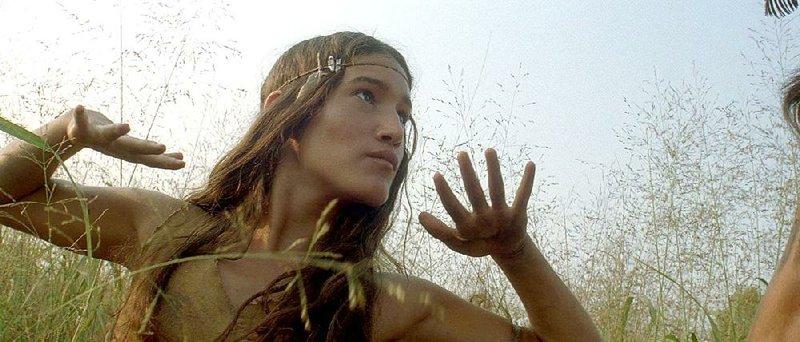Terrence Malick completists might consider this Blu-ray of The New World the dream version. Criterion's three-disc release contains the three different cuts of Malick's 2005 opus, which critics either believe is an incomparable masterpiece or an overly lavish work of self-indulgence.
As well as a 4K restoration of the 172-minute version, there’s the 135-minute theatrical cut and the 150-minute first cut. Also included are an on-set documentary and new interviews with the producer, the production designer, the editors, and the stars, all of whom speak reverentially of Malick and made me feel guilty that I can’t muster the same adoration.
 No one likes to be a philistine, and maybe it’s a result of watching on a domestic screen a film that ought to be experienced in the darkness of a picture palace, but I found myself growing restless with the familiar Malick tropes. Again he deploys the whispery voiceovers, the melding of classical themes and bespoke score, the narrative ellipses, and the golden hour photography of already beautiful people made to glow incandescently.
No one likes to be a philistine, and maybe it’s a result of watching on a domestic screen a film that ought to be experienced in the darkness of a picture palace, but I found myself growing restless with the familiar Malick tropes. Again he deploys the whispery voiceovers, the melding of classical themes and bespoke score, the narrative ellipses, and the golden hour photography of already beautiful people made to glow incandescently.
Why wouldn’t actors line up to appear before Malick and his cinematographer Emmanuel Lubezki's camera, knowing what the director once did for Sissy Spacek, Sam Shepard, Richard Gere and Linda Manz? Here it’s 14-year-old Q’Orianka Kilcher as the radiant Pocahontas and limpid-eyed Colin Farrell as the tormented explorer John Smith who loses his beloved Powhatan maiden to Christian Bale's John Rolfe.
Malick and Jack Fisk, his long-standing designer, clearly did their research, and the $50 million budget was well spent. Using the replica ships from the Jamestown Settlement museum and authentic Virginia locations saved Malick from having to resort to cheesy CGI. The sets were built under Fisk’s supervision using the materials and skills that were extant in the early 17th century
The camerawork is modest, with no lavish crane shots or drone work. Instead we get handheld images of dancing and courtship en plein air. I’m a sucker for a murmuration of starlings and wind whipping across pellucid water and stirring the grass, but sometimes all this lyrical nature reminded me of the kind of screensavers that pop up on yoga retreat websites.
The costumes and body-painting used for the "naturals" are clearly modelled on the contemporary watercolour portraits of the Algonquian people that John White brought back to England for his queen in the 1580s. Despite the adherence to authenticity, there’s still too much blow-dried hair – and I did find myself wondering if the real Pocahontas had also shaved her armpits.
Though mercifully unlike BBC Sunday evening costume dramas with too much dialogue and historical explication, The New World doesn’t wholly avoid familiar white Western liberal tendencies. Inevitably, the indigenous people are portrayed as pure spirits living close to nature while the colonialists are scheming desecrators. If Malick's movie is not quite as romanticising as Michael Mann’s The Last of the Mohicans (they share Cherokee actor Wes Studi), its philosophy is similar.
When the action shifts to England for Pocahontas' arrival at court, Malick retains his anthropologist’s eye. He presents the royals and their retinues as involved in arcane rituals and emblematic costumes, just like the native people whom Pocahontas has left behind. If clearly an influence on Yorgos Lanthimos’ The Favourite (they share Hatfield House), The New World lacks the faintest whiff of humour. It is calculated high art that tediously adheres to the same poetic register throughout. It’s proof of what goes wrong when filmmakers are addicted to overly pretty cinematography and try to script a movie in the editing room. It might not have gone amiss had Malick's collaborators been less worshipful.















Add comment